

Quick Links
Quick Links

eCommerce email marketing is the great equalizer in the only trillion-dollar industry with double-digit growth. Enterprising companies like BeardBrand, Dollar Shave Club, and Frank Body have made millions with eCommerce Email Marketing while carving a name for themselves.
Even though the main acquisition channel for each brand may be different, eCommerce email marketing is the workhorse they all use to ensure sales happen. This article looks at the essential aspects of a successful eCommerce email marketing strategy. When you get them right, you can unlock rapid growth for your business just as these brands have.
Let’s dive in.
1. eCommerce Email Marketing Segmentation

Segmentation is important. It doesn’t matter if you’re just starting your ecommerce business or have been making sales and building a brand for a while.
Personalized or segmented emails can deliver up to a 760% increase in revenue from email marketing. This also comes with a corresponding increase in click-through rates. That means more people are seeing your messages and landing on your product pages.
There are many ways to go about segmenting your market and your marketing messages. The method you choose will depend on the maturity of your business and your resources, but here are three you can start in email marketing.
Site behavioral segmentation

When someone is looking around your website and shopping, they tend to move through pages quickly and ignore what doesn’t interest them. If a product catches their eye, they’ll spend more time on the page and may or may not add it to the cart.
If they don’t add it to their cart immediately, they may leave your website and come back at a later time. If they visit the same page and stay for a reasonable length of time (at least 30 seconds), it’s a clear sign of interest.
Use the site behavioral data as an indication of interest in products and product categories. Send out emails that feature these products or content and show different benefits and use cases. Click data, pages viewed, products viewed, and actions (like favoriting or putting in basket) are things that your tools can track, and there is a lot of low-cost email newsletter software that can even do the trick.
Purchase history

Purchase history is one of the most powerful segmentation methods. People can say almost anything, but they’ll spend their money on things they truly want or need. If a customer has purchased a specific product in the past, then promoting similar ones through email is more likely to result in a sale.
For example, a customer bought a pair of shoes at a fashion eCommerce store. Over time, they get emails recommending more shoes with incentives like discounts and free shipping. They buy based on those eCommerce email marketing recommendations regularly. Even if they don’t buy, it won’t be out of place because they’ve shown they’re interested in shoes.
There’s a caveat with this type of segmentation. If you only send customers email messages related to their past purchases, you may miss out on opportunities to introduce different products. Just because someone buys shoes, doesn’t mean they don’t like jackets and jeans.
When adopting this strategy, send out emails related to past purchases 60% of the time and reserve the other 40% of emails for different product categories.
Email interactions
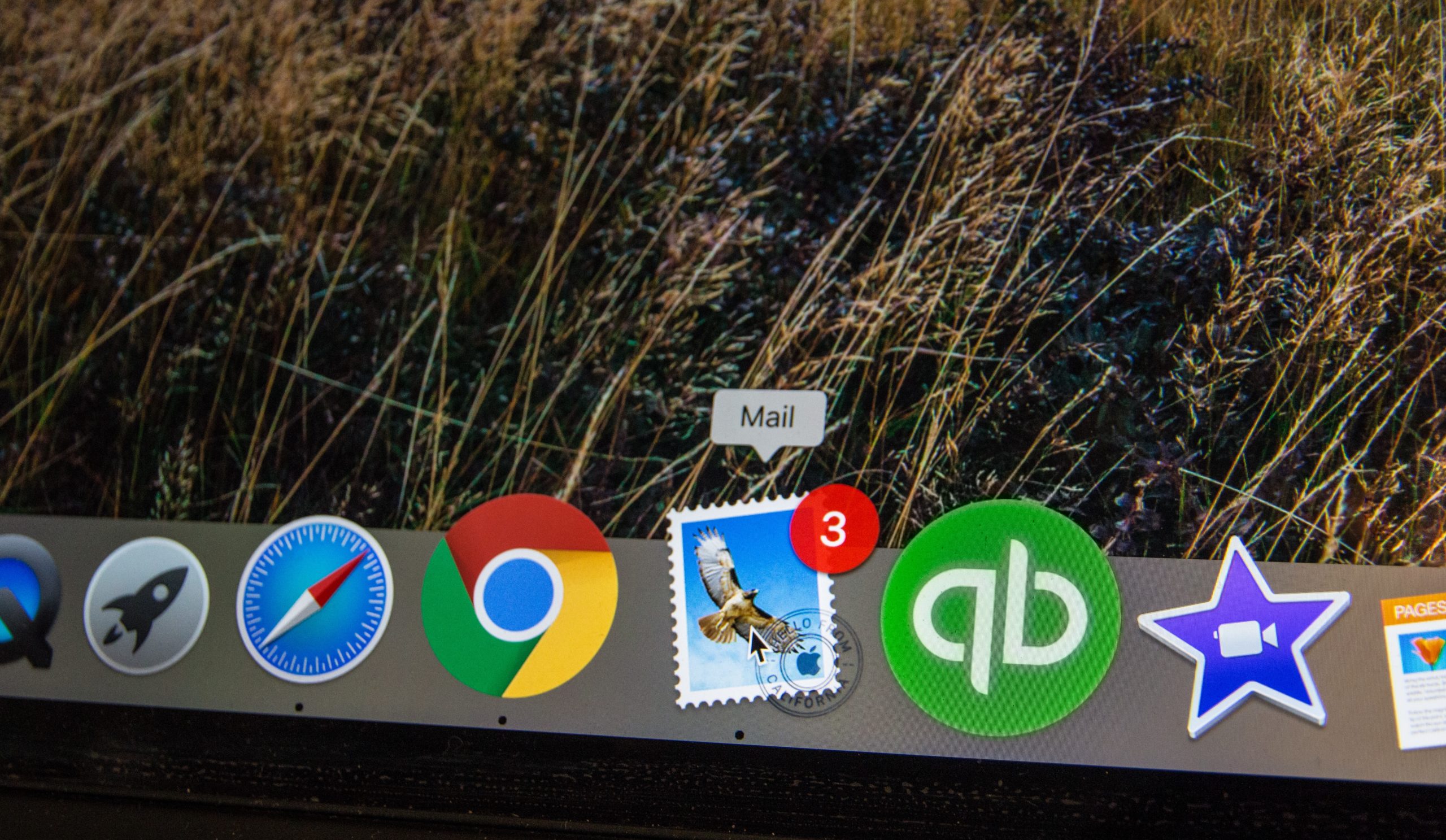
This is similar to website behavioral segmentation, but it is a bit easier to track and segment your emails. Take note of the kind of emails your subscribers are interacting with. Is someone only opening emails about sunglasses and ignoring everything else? Is there a group of subscribers that only likes belts?
Set up conditions in your email marketing service that takes note of when someone meets certain criteria then tags them accordingly. For example, if someone opens three emails or clicks on three links relating to belts, tag them “belt lover” and enter them into “belt lover email sequence” instead of continually sending them email blasts.
That’s a basic example, but it illustrates how you can take advantage of email activity to increase your revenue and engagement. Just like the other types of segmentation, make sure you don’t segment them in a way that prevents them from getting any other type of email. Once you’ve created SOPs, you can easily outsource this to a quality VA.
2. Social Proof
Social proof, in all of its forms, is powerful. 91% of 18 – 34-year-olds trust reviews as much as a personal recommendation. That was unheard of just a few decades ago and is a distinct opportunity to increase revenue. There are many social proof tools such as ProvenExpert and its alternatives that you can use to capture and display reviews and other forms of social proof. This is a powerful way to improve conversions right on your eCommerce website.
It shouldn’t end there, however. Continue the positive customer experience in your eCommerce email marketing campaigns. There are many ways to do this, but I’ll touch on 2 that almost any brand can use.
Take advantage of bestsellers
Look no further than books to understand the power of a “bestseller.” Authors the world over add the New York Times or Washington Post bestseller seals to book covers because they know it makes us more likely to give them a chance.
You don’t need to sell a million units before you can call something a best seller. As long as you have sales, you can use bestseller social proof.
Now, if you’ve only sold two pairs of an item, you may want to hold off a bit so you can truly identify what people love. If the number is relatively low, you can use humor to introduce your bestseller. This is what Bombas did.
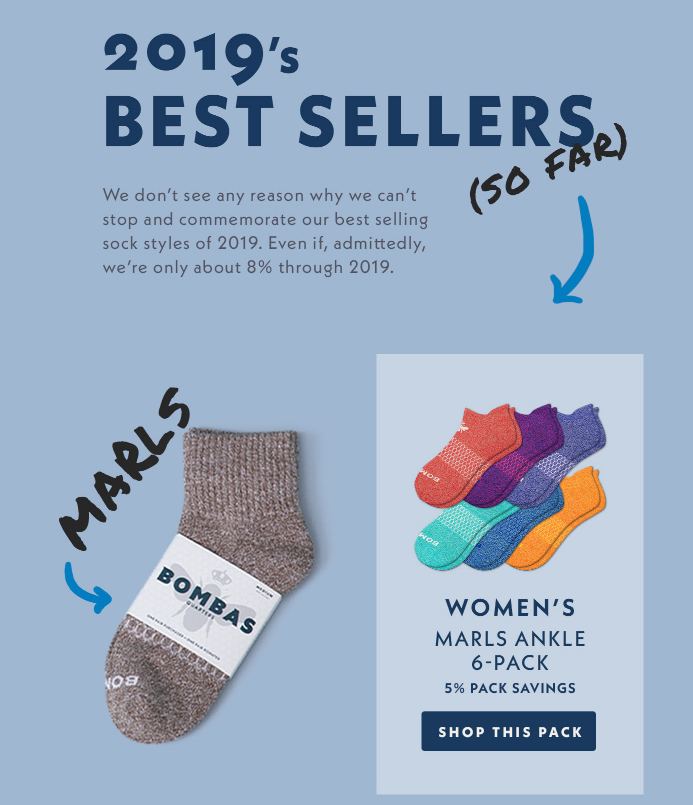
Humor dispels any feelings of resentment that may arise for launching a debatable bestseller. It also offers a discount which no one can be mad about.
Customer reviews
This is a tried and tested method of optimizing your product listings and increasing sales. In fact, many people won’t purchase from you if there are no reviews. Make sure you get some so you can use them in your eCommerce email marketing.
Add reviews related to a specific product you sell and reviews about your business in general to a product email. Then enhance its efficacy by adding a limited-time discount.
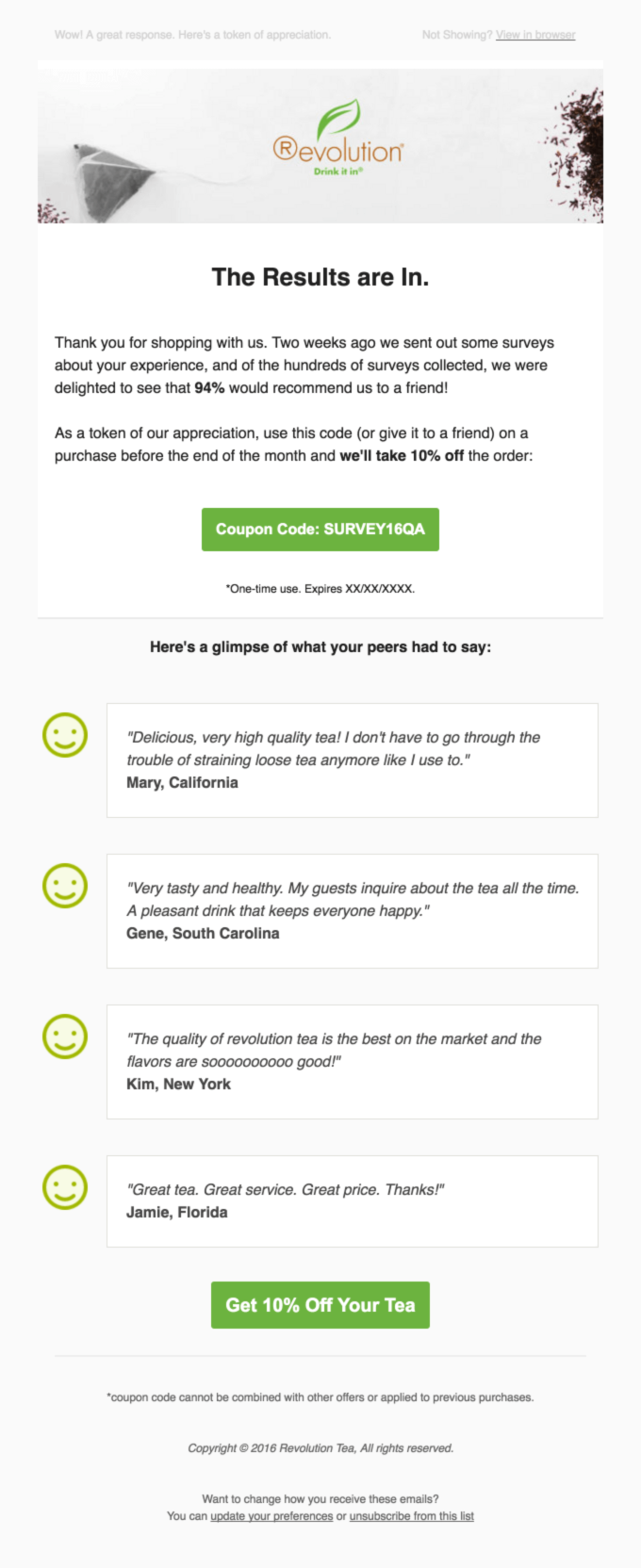
In the email above, Revolution Tea shows multiple reviews and offers a 10% discount on the next order.
3. Cart Abandonment sequences
Cart abandonment is a silent killer and is unique to eCommerce businesses. Have you ever shopped for 30 minutes at the supermarket only to abandon your cart on aisle 5? Of course not.
There are many reasons for cart abandonment. Three main ones are unexpected shipping costs, faulty discount codes, and a difficult checkout process.
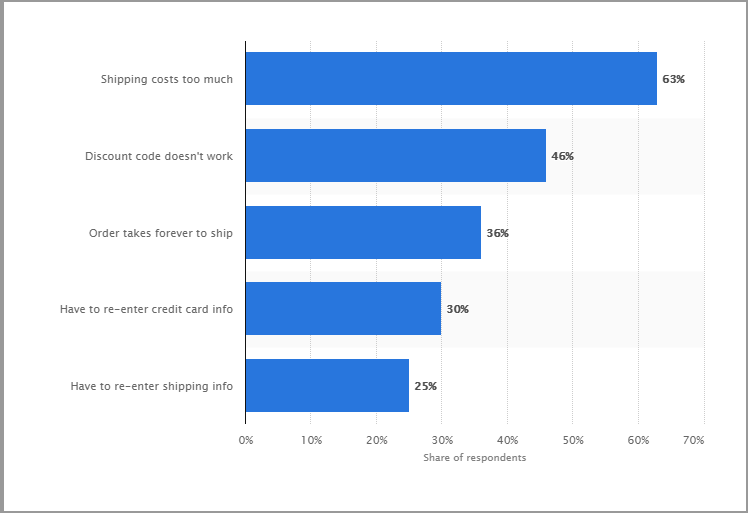
Depending on the reason for cart abandonment, you may be able to recover a large amount of revenue with cart abandonment emails. Start with your most popular products and test the messaging and frequency before rolling it out everywhere.
What an abandonment email should have
An effective abandonment email helps get the customer back to their shopping cart to complete the checkout. It has the following elements:
- Catchy subject line followed up by a humorous headline that most of us can relate to.
- Shows the product (which many businesses fail to do). Dynamically insert the exact products that were in the cart to jog their memory and reinforce the call back.
- Add a review, rating, or social proof. These elements in your abandoned cart emails must relate to the specific products in their cart. This lets potential customers know people are enjoying it and have gotten value from it.
- Give an incentive for customers to act now instead of later. That could be a discount, free shipping, or store credit – whatever works for you.
- A clear CTA will prevent confusion and make it super easy to click back to their cart to complete checkout.
There’s no hard and fast rule about how many emails to send, but if you’re just starting out, stick with at least two. Once you start getting results, increase it to 3. If you use more than three then it’s important to use a combination of abandoned cart and brand building emails. That means not every email is taking them directly to the product page or cart. Start with two and tweak as you get more experienced.
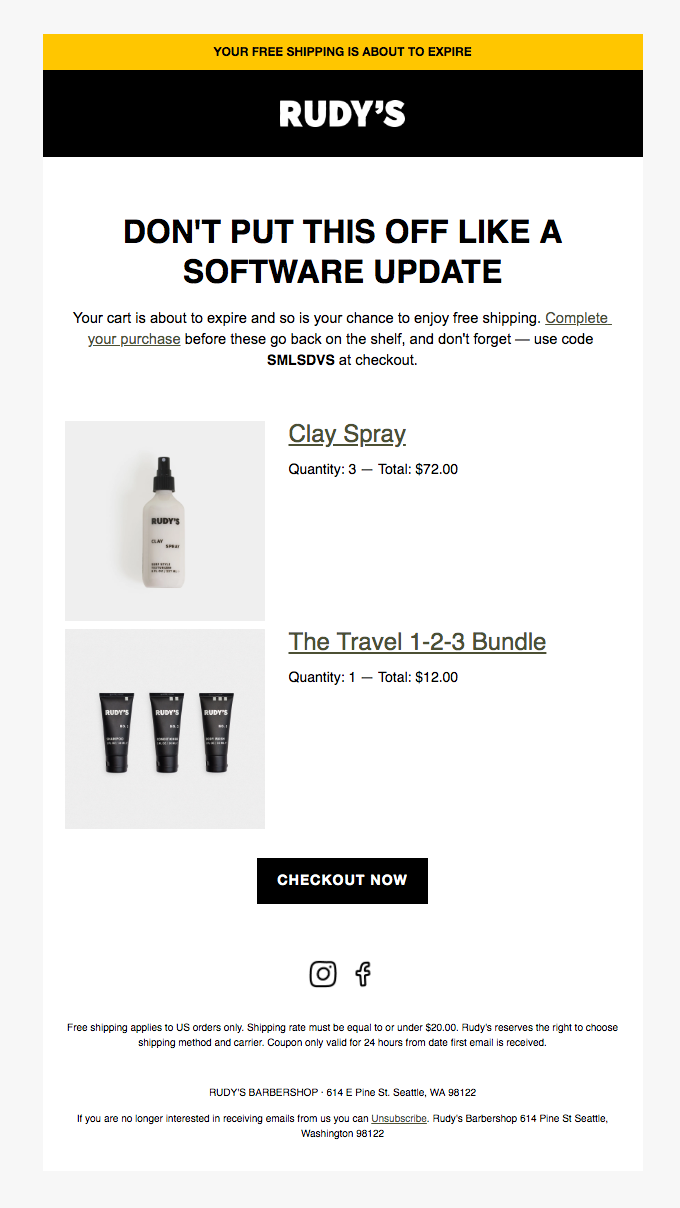
4. Order Confirmation Emails
In many cases, the order confirmation page and emails are like an afterthought. They’re transactional and leave a lot to be desired. In reality, they’re a great way to build anticipation and keep your new customer engaged.
If customers are engaged, buyer remorse will be reduced and customer satisfaction will be much higher.
There’s a simple way to go about this. Yes, include the information they need to confirm, track, and record their order. Go above and beyond, though, by promoting your brand personality, using the page as an opportunity to upsell, or encourage sharing and referrals.
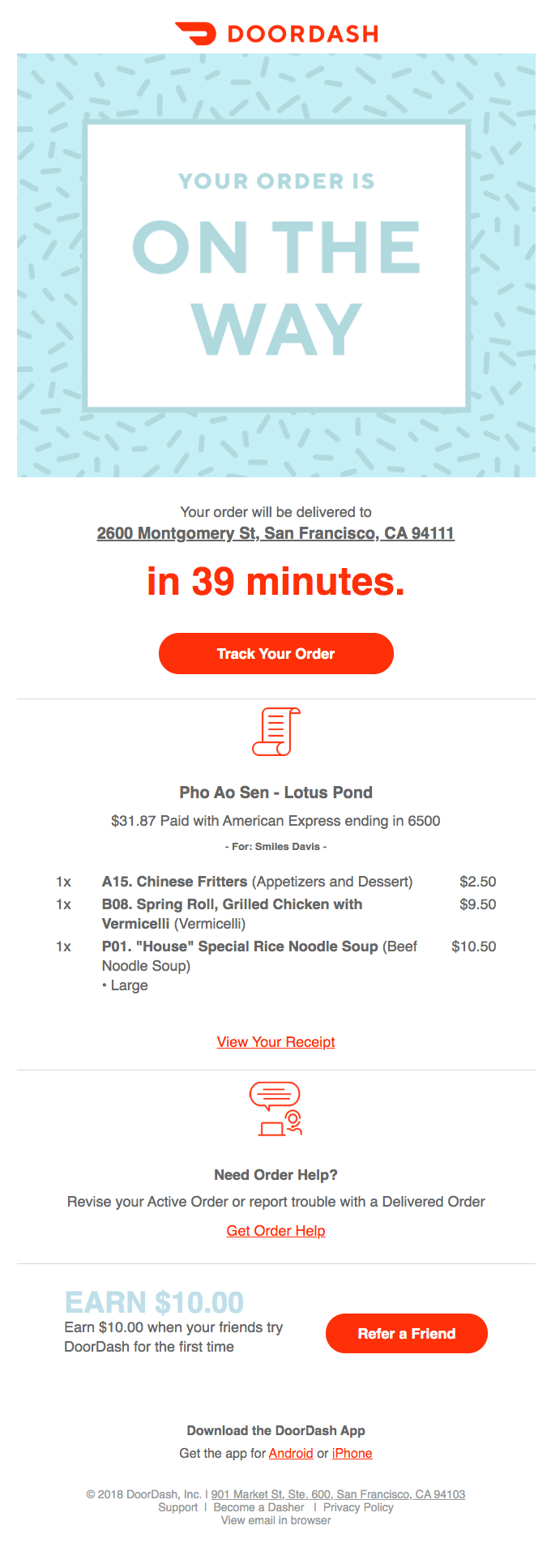
The email above is transactional but has a personal feel. It retains the branding of the company, delivers necessary information, and still takes advantage of the opportunity to get a referral.
Your order confirmation emails may be the highest impact areas you can leverage because there’s a lot of goodwill right after purchase. Dopamine (the feel-good hormone) is released when shopping and people are happy. They’re more likely to take additional action if you ask.
Apart from traditional upsell sequences, the confirmation email is the best place to present a complementary product or an additional action.
Bonus: Back in Stock / Out of Stock Messages
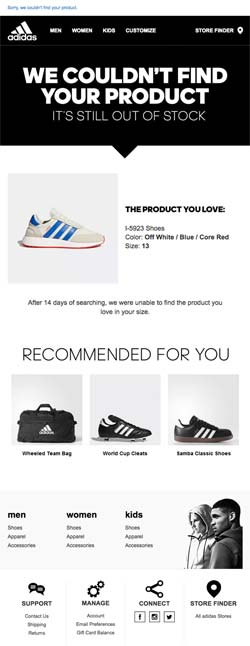 Being out of stock isn’t necessarily a bad thing. It can promote urgency and show that there is true scarcity. Use emails that highlight when a product is running low, out of stock, and back in stock.
Being out of stock isn’t necessarily a bad thing. It can promote urgency and show that there is true scarcity. Use emails that highlight when a product is running low, out of stock, and back in stock.
They should be combined with segmentation to make the most out of them.
For example, you’d show out of stock notifications to people who visited the page or added an item to their cart recently. You’d also show low stock to the same group of people.
When the items are back in stock, you’ll send the same people a notification. At this point, they’ve gone through an entire stock cycle and, if they’re interested, will buy immediately or when you send another low stock notification.
In the example on the right, the email is about the item that wasn’t even back in stock. still out of stock! The email could be seen as a customer service or customer nurturing type email. The brilliant part is that it suggests alternatives. You know the customer wants a specific item, but since it’s not available, you use your understanding of similar items in your catalog to get a sale anyway.
Conclusion
There are countless ways to use eCommerce email marketing to grow your business. This article has only scratched the surface. Even though it didn’t cover everything, these are the essentials, and you can start applying them today.
As long as you can properly implement segmentation, social proof, and cart abandonment sequences, you’re already doing better than most eCommerce businesses. If you can also use order confirmation sequences to your advantage, then you are in the top tier.
How are you using eCommerce email marketing? Share this post on socials and let us know!

Hi Daniel, nicely written. Marketers often look for strategies to get people to open your abandoned cart emails, there are many different strategies to try but I think below are the ones that can really entice the buyer’s intent.
Play around with all sorts of of subject lines.
Experiment with how you write and style your copy.
Segment your list so shoppers receive the most relevant messages.
Test each experiment and let data tell you what works best.
thank you for this informative article.